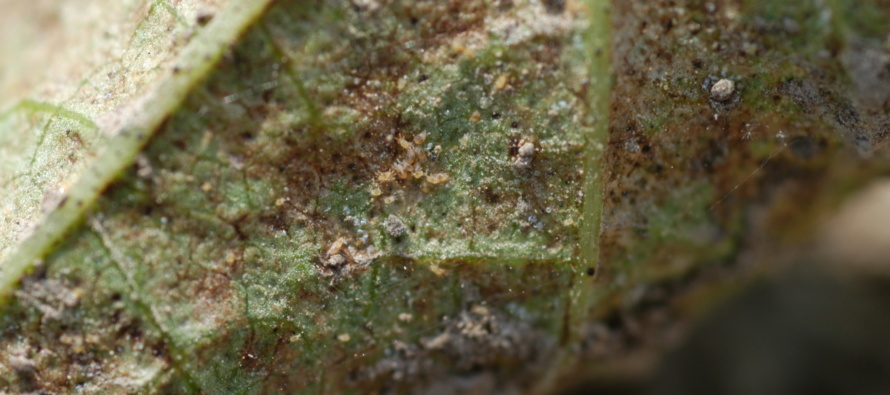Spider Mite Recommendations

Related Articles
- Calcium and Magnesium For Mississippi Crops 1
- March 11 Precision Agriculture Workshop 0
- Ground Speed Affects Spray Droplet Deposition 0
Latest Tweets
Over the last several weeks, the weather has been hot and dry and in some areas of the state spider mites have reached treatable thresholds. Rarely do spider mites have even distribution across the field. Generally, they tend to show up in spots around field edges and distribute into clumps within the field. This type of distribution may make it more difficult to decide when treatment is justified. Its important to watch the areas where symptomology or mites have been occurring and determine if either have been increasing over your sample dates. Other thoughts to consider, would include treatment decisions for other insect pests, like tarnished plant bug. Many products to control other arthropod pests have the potential to flare spider mites, especially if mites are present at the time of application. In this case, you could either add a miticide to the application or chose an alternative that is less likely to flare mites. For example, Transform is less likely to flare mites compared to organophosphates or neonicotinoids. Another factor that may contribute to your management decision is weather. Spider mites prefer hot, dry conditions and can be impacted by rainfall. Rainfall has the potential to knock back spider mite populations but cannot be relied on solely. While rain may aid in management, it doesn’t generally eliminate the need for treatment, it normally just delays the application for a few days.
Previous research has shown that infestations longer than 14 days, even a low level infestation, can significantly reduce yield. Reminder that the time of infestation is not when you begin seeing symptomology. Mites are present a few days prior to visual symptoms.
While treatments tend to more costly compared to that for other pest issues, there are a few options that provide good control of mites. Abamectin tends to be the first choice in many situations because it provides adequate control and is more cost-effective compared to other products on the market. However, abamectin has been less consistent over the last several years. In some areas, the level of control achieved with abamectin (less than satisfactory) may warrant an application of another miticide. Other options that provide good control would be Zeal or Portal. These tend to more expensive and may be harder to find. However, the level of control with a single application may be just as good or better than multiple applications of the other products.




Let me tell You a sad story ! There are no comments yet, but You can be first one to comment this article.
Write a comment